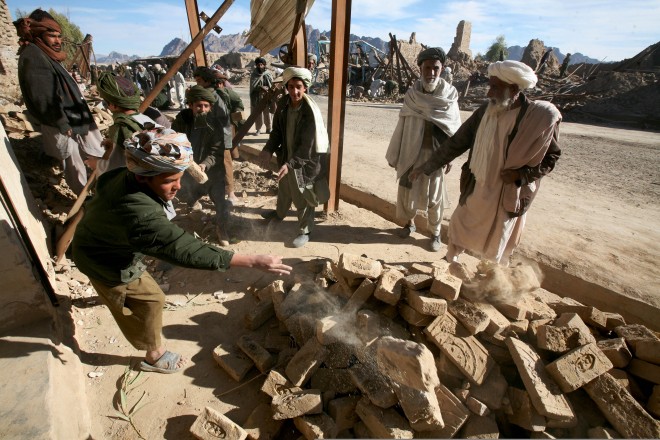 WHATS NEXT FOR OUR NATIONAL SECURITY
WHATS NEXT FOR OUR NATIONAL SECURITY
Operation Moshtarak, the current NATO offensive in Afghanistan’s Helmand Province, commanders have a powerful tool at their disposal: cash, and lots of it. According to Lindy Cameron, head of the Helmand Provincial Reconstruction Team, the fighting is being quickly followed by “cash-for-work” programs meant to put local communities back to work, along with other reconstruction projects.
Cash for work, however, has some risks of its own. The biggest potential problem is fraud, often in the form of the “phantom project” (a task that is never actually undertaken or completed) or the “phantom staff” (payrolls that are padded with no-shows). But tracking dollars in cash-for-work schemes is essential. As the U.S. Agency for International Development learned in Iraq, money spent unwisely on public works schemes can end up in the hands of insurgents.
So how do you track cash-for-work in a place like Helmand, where fighting still rages? John Stephens, who manages programs in Afghanistan for the U.S. charity Mercy Corps, came up with one solution: Use cameras with GPS to verify aid projects in insecure places where expatriate staff can’t oversee projects in person.
The idea is simple: If an area is too dicey to send in expats, Mercy Corps sends in Afghan staff with GPS cameras — either a Nikon point-and-shoot, or a Garmin handheld GPS with built-in camera — to verify that the projects are actually being undertaken in the right places, so they can pay wages. The data is then uploaded to a Google Earth–style program, so Mercy Corps — which implements USAID projects — can track projects and their participants.
In Afghanistan, this kind of accountability is key. As the Washington Post reports today, U.S. officials are concerned about a “blizzard of cash” that is being hand-carried out of the country. Some of that money may be legit, but there’s also a serious concern that the U.S. government may be indirectly fueling corruption through a massive infusion of aid dollars to do everything from building roads to picking up trash and cleaning canals.
“Everyone who’s there is holding vigil,” Stephen told Danger Room. “The moment you turn away for a second, that’s when corruption can blossom. Especially with cash-for-work, because there’s so much money involved.”
Using GPS cameras, Stephens said, “extends the reach of our program managers. So on the one hand, it was about volume — you put cameras in people’s hands, and they go out and photograph it and upload it to Google Earth and verify it — and in other places … you can expand the service to communities where it’s too insecure to work, or too remote.”
It’s a model that Mercy Corps is applying to other places where it operates. Stephens said using GPS cameras was also an option for aid projects in places like Congo, Somalia and the tribal regions of Pakistan.
Of course, technology isn’t the only solution. If you want to read a fascinating account of another way of managing these programs, read Tim Lynch’s accounts of running cash-for-work in contested urban areas in Afghanistan — places like Kandahar, Gardez, Lashkar Gah and Jalalabad. “There are no security teams, no armored vehicles, no guarded compounds, no nothing — just a small life-support payment for the two internationals to rent guesthouse rooms and pay for food,” he wrote last year. “The project managers provide their own security.”
Not everyone can do what Lynch and his colleagues do: They have years of experience, language skills and local ties that allow them to work more independently. But using cameras and GPS is another option that merits a closer look, particularly as the administration pushes a civilian-development surge to match the military effort in Afghanistan.
“This is in furtherance of our mission and making sure that we get into those communities that need it the most,” Stephens said. “It’s not about having an eye in the sky, having a ‘humanitarian Predator’ out there that is keeping an eye on communities.”